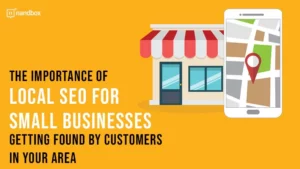Every business owner should be familiar with lean business planning. It strikes the perfect balance between the formal business plans of the past, which were too long and rigid, and the incremental steps and analysis that are the foundations of lean manufacturing and lean startups. The key is to start small and keep checking on your progress. And for actual enterprises, planning isn’t about the grand scheme; it’s about the management it brings about. What is a lean business plan? Why is it important for businesses? And how can you implement it in your own business application? This is what we will be discussing in this article.
Lean Business Planning: An Essential Business Factor
The lean plan just includes the four necessities that any business requires. It’s not a long document or plans with lots of details to give to creditors or investors. Instead, it’s a short plan for running the business in an efficient way. Simply put, it is carried out to enhance management. The lean business plan consists of four main steps to know thoroughly:
Strategy: A Bulleted Summary
Your identity, your work, and the people you serve will be more concentrated the smaller your business is. Many of us maintain our plans in our heads at all times, but you might also choose to put them in writing only in bulleted lists merely as a reminder. For example:
- Don’t waste your time by planning outside of your strategy
- Who is your target audience? Who are you trying to reach?
- Strategy is to “focus” and not burn yourself over your goals
- Build a solid business framework
Tactics: A Detailed Promotional Strategy
Without tactics, a strategy would be at its weakest. While creating detailed action plans that are packed with tactics that make strategy important, keep your strategy in mind, along with your focus, what you are and aren’t doing, and for whom. The key here is execution, or actually taking an action in the right direction of your plan. There are three types of tactics we’re talking about here:
- Marketing or promotional tactics: target market, points of difference, placement, communication, pricing, channels, internet presence, interaction, content, sales structure, and all of the traditional marketing mixes elements like public relations, advertising, and special promotions. Combining digital and offline marketing is vital, reaching diverse audiences and leveraging both channels for a cohesive strategy that enhances brand visibility and engagement for better outcomes. By creating QR codes, you can seamlessly bridge digital and offline marketing efforts, offering consumers an easy transition from offline materials to online content for enhanced engagement and tracking.
- Service (product) tactics are dates of release, data sets, branding, market segments and alternatives, apps, menu options, “Stock Keeping Units” (SKUs), services, websites, technologies, suppliers, delivery options, and so on.
- Infrastructure tactics: or in another word, financial tactics, include funding, employment, training, policy, and other financial aspects.
A Sales Forecast
Let’s talk about your business’s money management for a bit. Without effective money management, a business’s management cannot be optimized. You need to forecast your basic company numbers so you can keep track of performance, find problems, and take advantage of pleasant surprises.
Don’t stress too much about predictions. You can make a simple sales and expense prediction if you know how to manage a business. It’s more important to present reasonable assumptions than it is to be exact. You won’t always be right with your numbers, but if you make good assumptions, you can figure out where and how you went wrong and fix yourself regularly.
A firm cannot be planned without taking cash flow into account. Even though some small firms can maintain positive cash flow by keeping sales above costs and expenses, this is not the case for most of them because they must make purchases in advance and don’t always receive payment at the time of sale. Money in the bank is not a guarantee of profitability.
Execution of the Plan: Simple Milestones to Walk Towards
Strategies without clear details are merely a waste of time. Without dates, deadlines, and clear work assignments, none of your techniques are meaningful. These are the key points you should be focusing on:
- Scheduling your review: this is one of the most essential points that one must focus on. Ignoring your monthly review schedule can lead to business chaos. You can do it whenever you like, as long as the day you choose is set to meet every single thing you listed.
- List of predictions: assumptions should always be specified because you always start by looking at them while revising. When results differ from the plan (which they usually do), you start the plan running, monitor the results, and then check your assumptions to determine if they have changed. If so, then alter the plan. If they haven’t changed, you might still make changes to the plan, but first, you should assess your execution.
- Business milestones: what should occur, when, and who is accountable? It’s a short list of things to do, but it’s essential to execution. Make it specific to your requirements so that it either consists solely of reminders for you or includes team commitments together with budgets, start dates, and finish dates. Real management responsibility is the goal here. This allows you to monitor your progress and address any snags. Additionally, rewarding employees is good for business and them. With certificate templates, you can develop tailored designs to recognize business milestones and reward employees for quality work. Include placeholders for names, dates, and achievements, ensuring efficient and accurate certificate production. Before you start making a certificate, take inspiration for your certificate from the certificate of appreciation format guide. When implementing a lean business plan, it’s pivotal to establish clear milestones and recognize the achievements along the way. Celebrating these can range from employee-of-the-month awards to larger corporate recognitions, tailored by a reliable crystal trophy supplier providing exquisite customizable options for all your award needs.
- Metrics and analytics: these two are the opposite of milestones, and they are also a great way to hold managers accountable. Sales, costs and expenses are of course the most crucial, along with information on who is in charge of what areas of revenue or spending. However, the majority of companies also track a variety of other helpful performance indicators. For more information about this topic, check out our article about mobile app analytics metrics.
Advantages of a Lean Business Plan
When using a lean business plan, you’re offered several benefits for your business, such as:
- Putting emphasis on the fundamental elements of your business plan and success
- Creating a strategy that is simple for someone without business experience to comprehend and understand
- Presenting a visual representation of your business
- Offers flexibility to update or change your business plan easily
- Reduces the time consumed in a business planning process, unlike the traditional business planning methods.
How to Create a Lean Business Plan
Now that you know the lean business plan’s strategies and have had a quick overview of how it works, let’s get to the details on how you can actually create one.
Define Your Business and Goals
Start off by providing a brief, high-level overview of your business.. Your company’s work should be summarized in one sentence. Your response should focus on the unique selling proposition or value proposition that your business offers and how you stand out from competing products. Imagine you own a florist that specializes in selling and delivering fresh flowers in Fort Lauderdale, you could define your company as a local business that sells only fresh flowers with same-day delivery in Fort Lauderdale.
Choose the Problem You’re Addressing and Provide the Solution for It
Describe the issue you want to help your consumers with. Write down the problem that clients are experiencing in a few phrases or bullet points. Once you’ve found the problem, explain how your solution meets the need that problem creates.
Know Your Competitors and Target Market
Choose your target market based on your solution. Describe your ideal client by focusing on their key attributes or traits. Make a brief list of your top competitors using bullet points, taking into account the other options that customers may have when searching for a product like yours.
Determine the Marketing Path You’ll Take
Specify the business strategies you’ll take to make sure your business plan is successful. Start by talking about how you will sell the goods or services your app offers. Make a bulleted list of the marketing strategies you’ll use to get people interested and convince them to buy your products or use your services. It’s also essential to consider your price and cost structure during this phase.
Ask For Feedback on Your Plan
Get trustworthy friends, family, or business partners to assess your lean business plan to see if they think it makes sense. Ask for their opinions and make sure they understand the plan fully. Make sure that your plan is short and can be amended easily; you should only need to make minor revisions based on their feedback if any.
To conclude
Want to have an app for your business and implement a lean business plan for it? We can definitely help you with that. Our app builder is the only native no-code app builder in the market currently. We will assist you in developing an app that is compatible with both the Android and iOS operating systems. With our simple and easy drag-and-drop method, you’ll be the only controller of your app development process. You won’t need any prior knowledge of any coding or programming languages. With us, you’ll have complete freedom and flexibility to navigate your app and get it out for the world to use. Sign up for our app builder now and enjoy our 14-day free trial!








